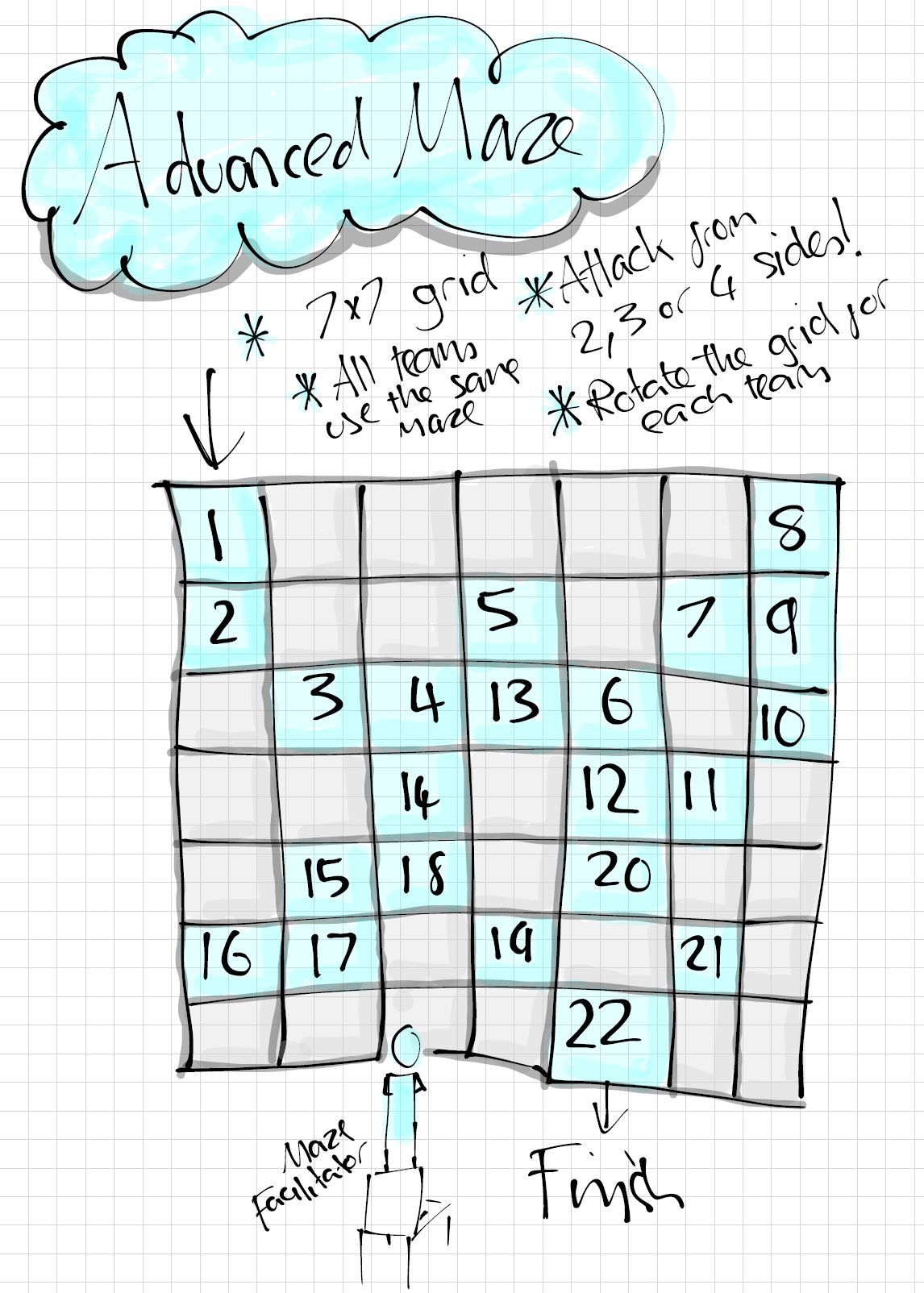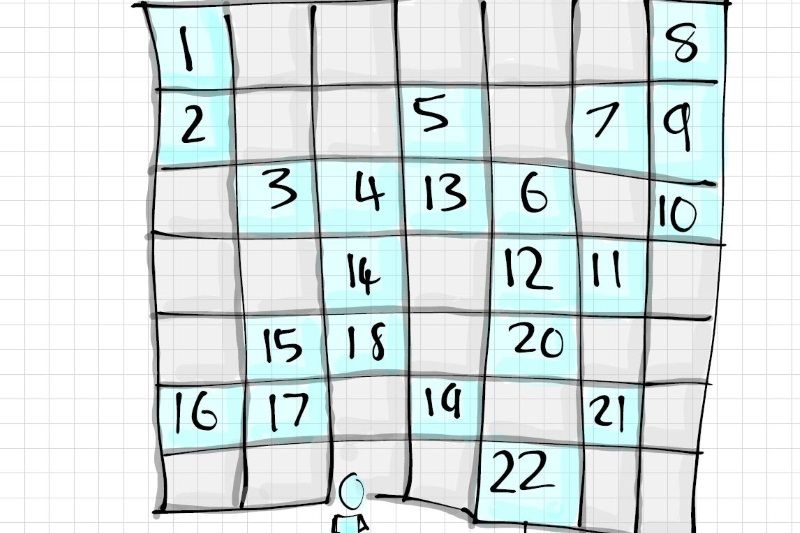Original Maze
HOW TO PLAY
SETUP
- Space: You will need a large, empty space to play.
- Build the maze : Have the teams build a 7x7 grid, with squares large enough to step in them.

This grid is particularly complicated. It has been designed for people who are used to solve problem as a team, like professional coaches.
You can create your own grid and make the path easier to find to make the game simpler.
RULES
- The team will have time before starting to solve the maze to collaborate and produce a strategy.
- When the team begin to solve the maze, no further talking is allowed.
- The team may not use any tools or implements to solve the maze (E.G. no breadcrumbs).
- While the maze is being solved, only one team member may enter at a time.
- When a team member steps on an incorrect square, they must return to the beginning by FOLLOWING THE PATH that they have discovered so far. Should they go wrong, they must stop and try again to retrace their steps to the beginning.
- When a team member exits the grid at the beginning (following stepping on an incorrect square) they are not allowed to be the next person to enter grid.
- When a team member successfully completes the maze, everyone from the team has to go through one at a time.
GOAL
The game is won when EVERY team member completes the hidden path.
FACILITATION
- Split the group into teams with the same number of people
- Designate a facilitator for each team. EAch facilitators need to have the grid printed out, on their phone or tablet.
- Have each team pick a different color of stikies and use them to differentiate the team by sticking them on the team members
- Explain the rules to all teams
- Give each team as much time as they want to discuss and collaborate on a plan to solve the maze.
- They can ask questions to their facilitator if need be. As a facilitator though, do not reveal anything about a possible strategy.
- When the team decides to start, remind them that game will now be played in silence.
- Position yourself on a chair on the opposite side of the grid. Make sure your visibility field is ok by asking other team players not to stand in front of you. You'll need to see the grid perfectly.
- Start a timer as soon as the fist team member enters the maze
- When a team member steps on a correct square, state: “CONTINUE”.
- When a team member steps on an incorrect square, state: “STOP, GO BACK”.
- When a team member is going back and steps on an incorrect square, state: “STOP, GO BACK”.
- When a team member attempts to enter the grid two times in a row state: “STOP, GO BACK”.
REFLECTION
- Have all team members gather together with their facilitator
- Use the debriefing cube and its list of questions to debrief the game
TAKE AWAYS
Having more than one team in the grid adds an extra level of complexity by adding impediments. People will have to wait when another maze runner occupies a square, or find a way to collaborate with the other maze runners.

